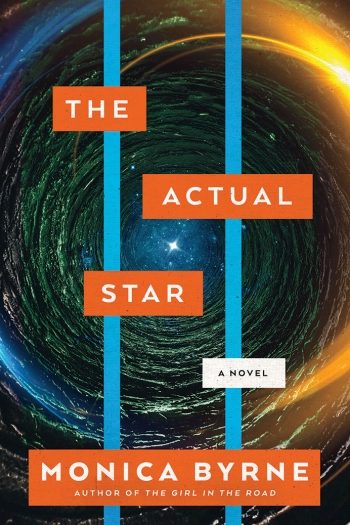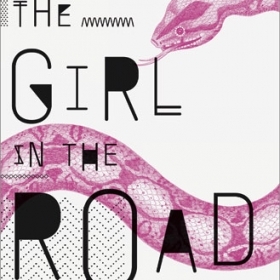I’ve been thinking a lot about the end of the world. It’s hard not to, with unrelenting news about fatal floods and fires, deadly earthquakes and tornadoes, and harmful people overtaking governments. It’s no wonder that in her new sci-fi novel, The Actual Star, Monica Byrne ’03 refers to our current time period as “The Age of Emergency.” Every day has a new crisis.
The Age of Emergency is just one of the many things that Byrne gets right in her new book. There is so much about The Actual Star that is all too timely. Byrne’s novel takes place in three periods: in 1012, at the fall of a Maya royal family; in 2012, when an American girl named Leah travels to Belize in search of her Maya roots; and in 3012, in a utopian society of travelers who have divided into warring groups in an ideological schism. Byrne probes a huge range of relevant topics—environmental justice, climate change, border crossing, refugee status, gender and sexuality, identity, capitalism, polarizing politics, the ways religions change to fit our needs—but what her book really captures is that anxious feeling of thinking the world as you know it is ending.
In 1012, royal twins Ajul and Ixul cannot imagine a world where their family does not rule. In 2012, Leah anticipates the predicted Dec. 21 apocalypse. In 3012, ideological leaders Tanaaj and Niloux both know that their peaceful society is on the verge of collapse. In each storyline, the characters are overcome by not knowing what will come next because, as much as humans try to control and predict the future, we never can.
But readers of The Actual Star know what people in the present always forget: The world keeps going. In 2012, one of the local guides, Javier, speaks of his Maya ancestry: “We Maya never disappeared,” he says to his tourists, “we just changed.” The Maya elites may have collapsed, but the millions who made up that dynasty never went away—they simply changed form. And that’s how it has always been: Dinosaurs grow feathers to become birds, fish grow legs to become mammals, farmers migrate to cities to become merchants, tour guides leave hometowns to become philosophers, regular people are immortalized in stories and become mythical beings. Nothing ever really disappears; it’s all there, layered below.
Niloux develops a way for her “aug” (an augmented reality app, implanted in everyone’s brains in 3012) to see her past lives. When she enters a space, anything she touched in a previous incarnation lights up. This spring, 11 years after graduating from Wellesley, I started working for the mothership as a senior editorial writer in the communications department. Walking around campus now with my fac/staff badge, I feel like Niloux—seeing glimmers of my old self in a chair at El Table or rushing to class in Founders. While graduation in 2010 may have felt like the end of the world to 22-year-old me, I didn’t know one day I would be back walking those same paths in a new incarnation.
We don’t know what life holds for each of us. We don’t know how the world will change. We don’t know how humans will evolve. But things never stop. Even though The Actual Star is an apocalyptic novel in many senses, I found reading this book right now, while it feels like the world is falling apart, to be supremely comforting.
Because nothing really ends, it just changes.
Bartels’ book, Good Grief: On Loving Pets, Here and Hereafter, will be published next summer by Mariner Books.








We ask that those who engage in Wellesley magazine's online community act with honesty, integrity, and respect. (Remember the honor code, alums?) We reserve the right to remove comments by impersonators or comments that are not civil and relevant to the subject at hand. By posting here, you are permitting Wellesley magazine to edit and republish your comment in all media. Please remember that all posts are public.